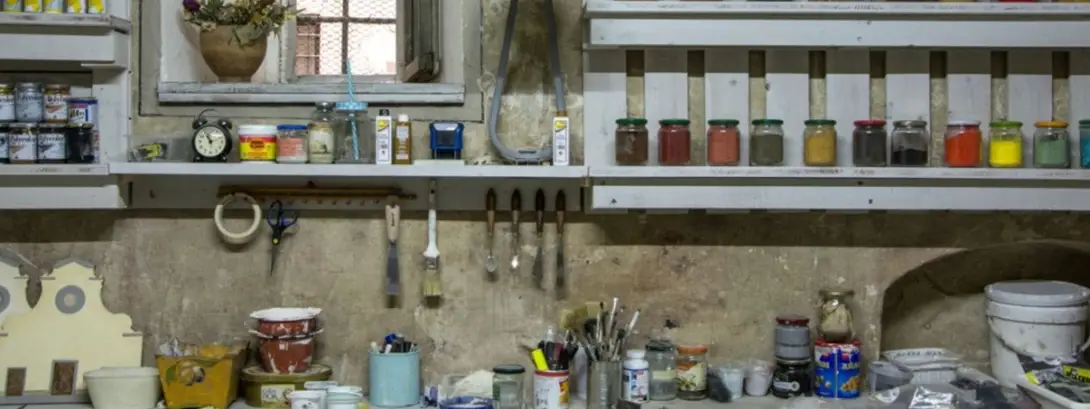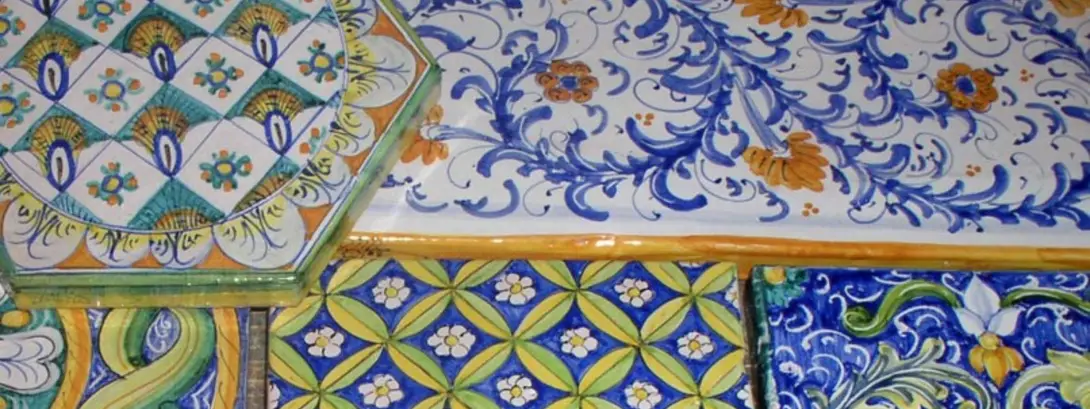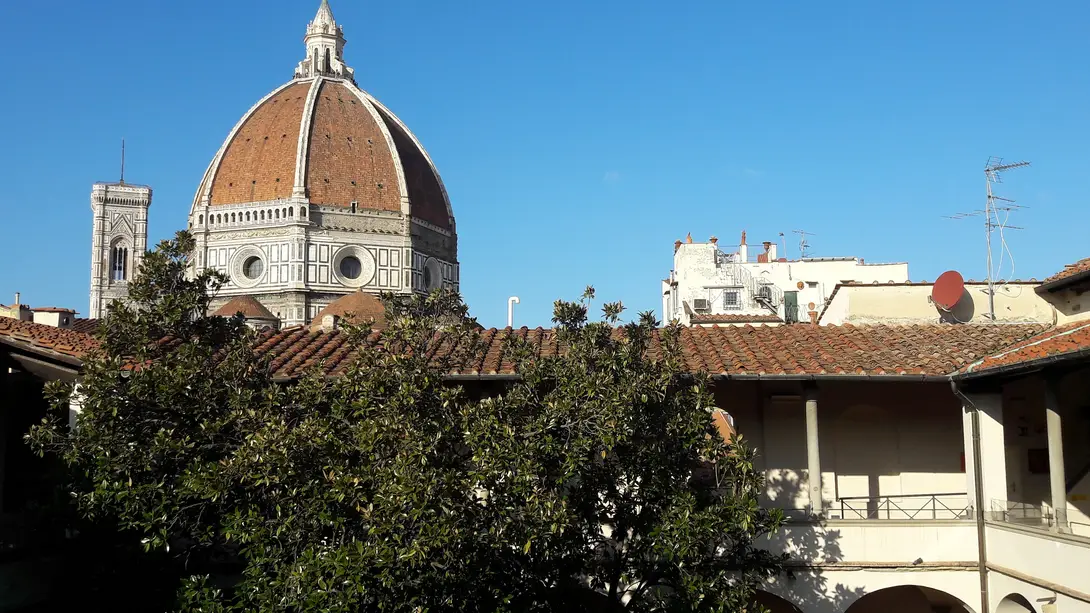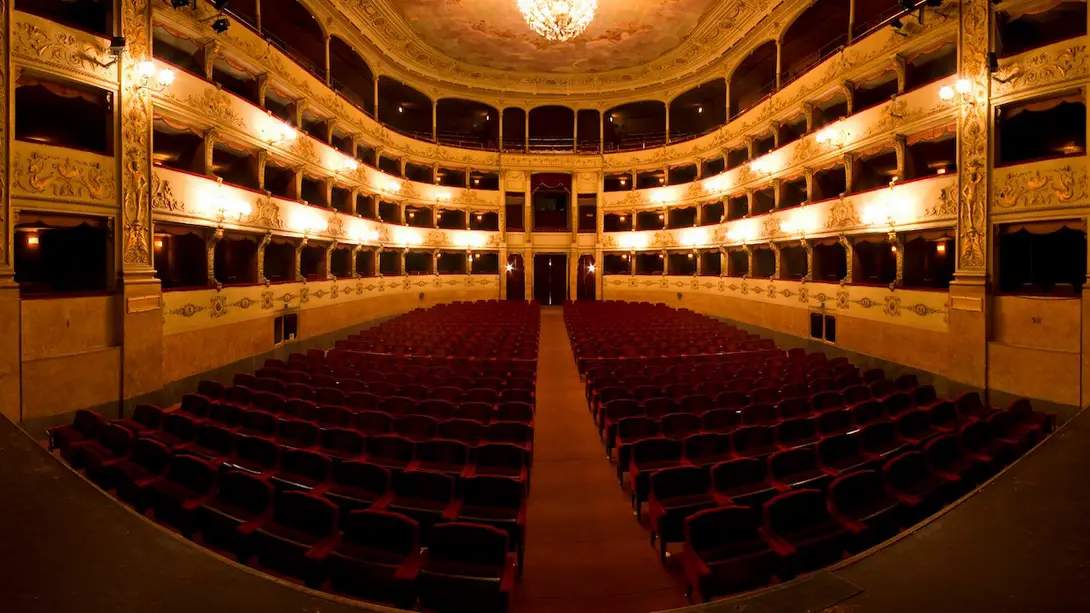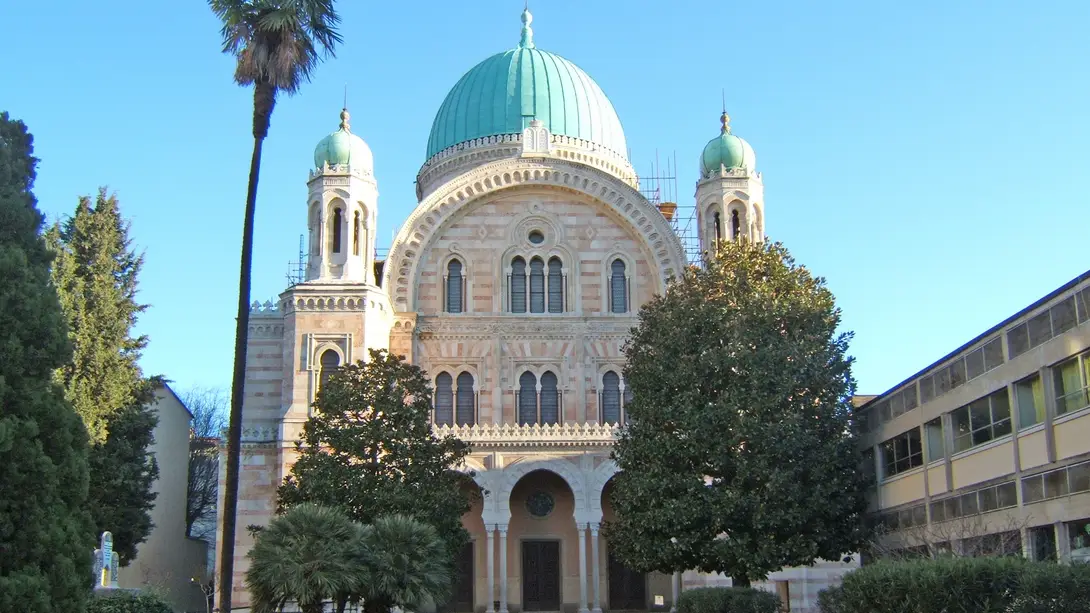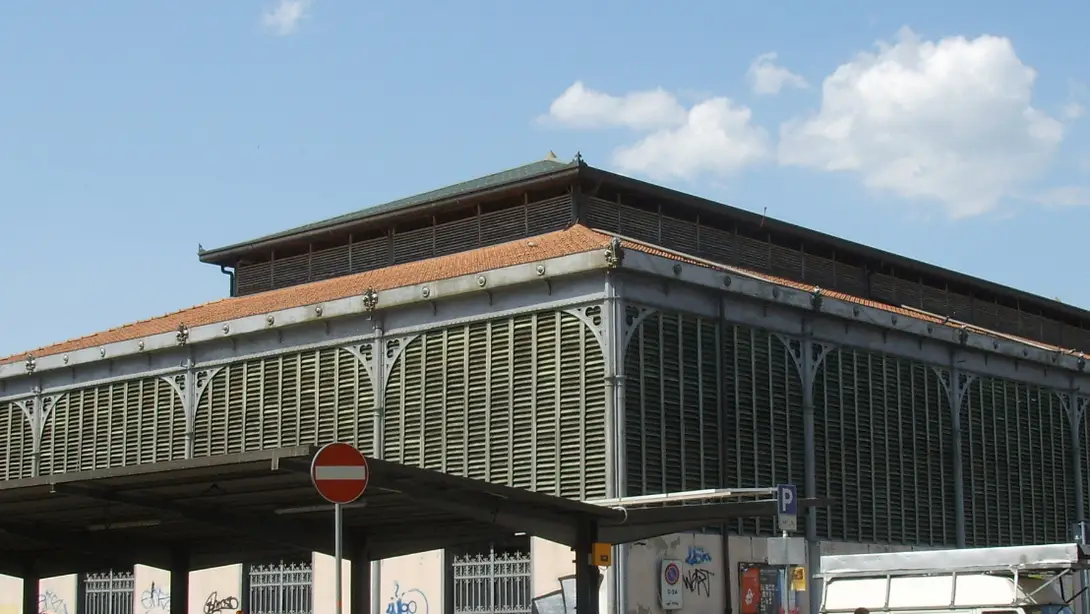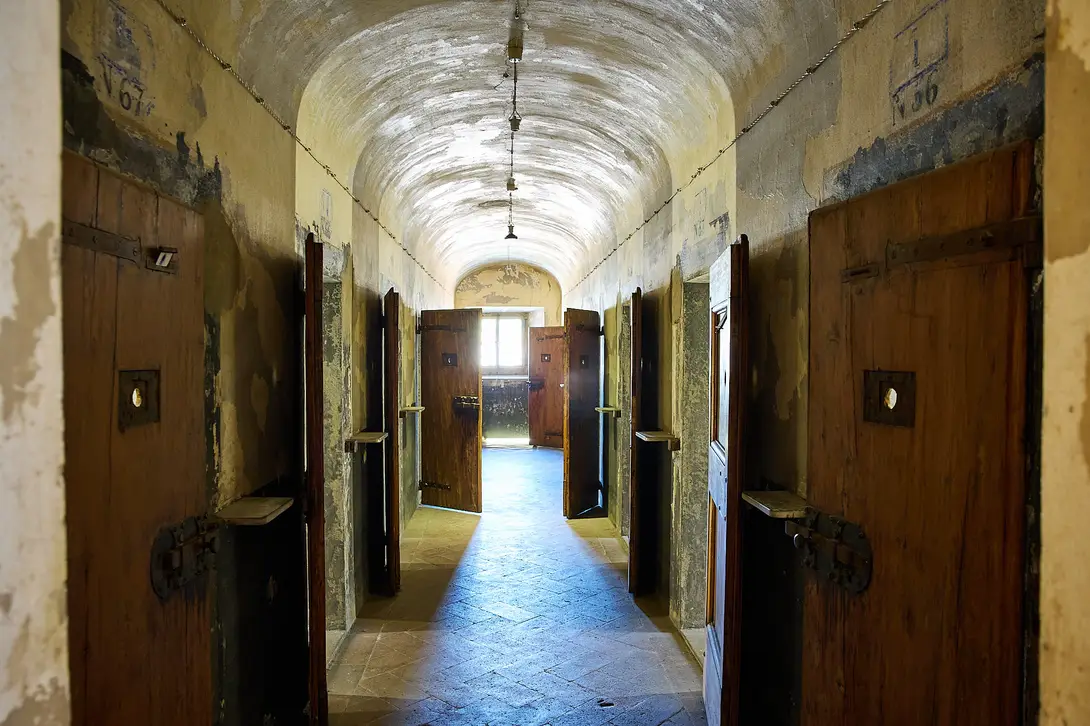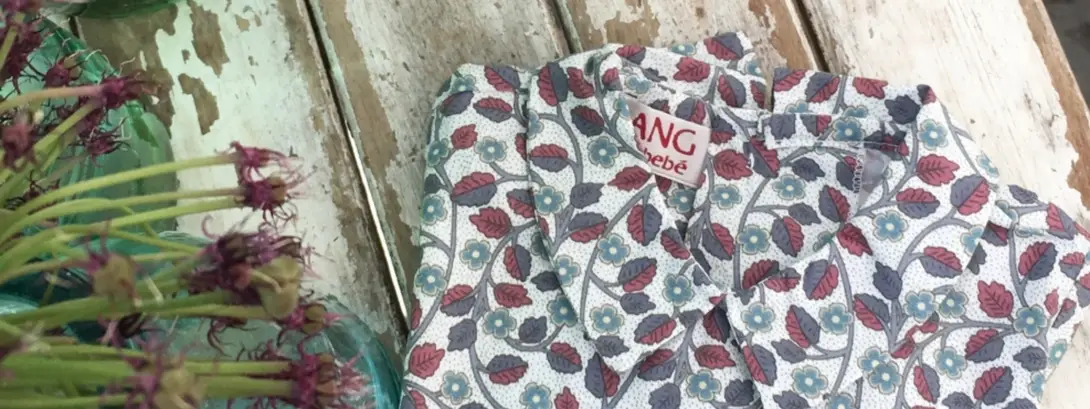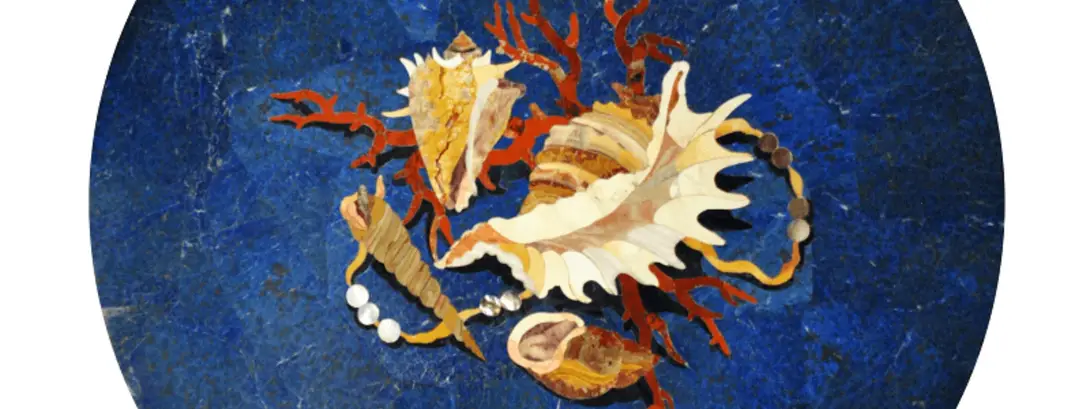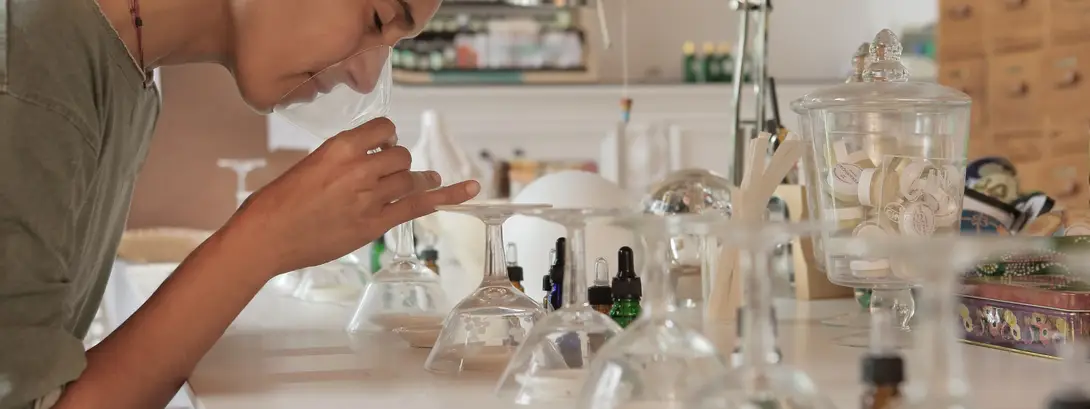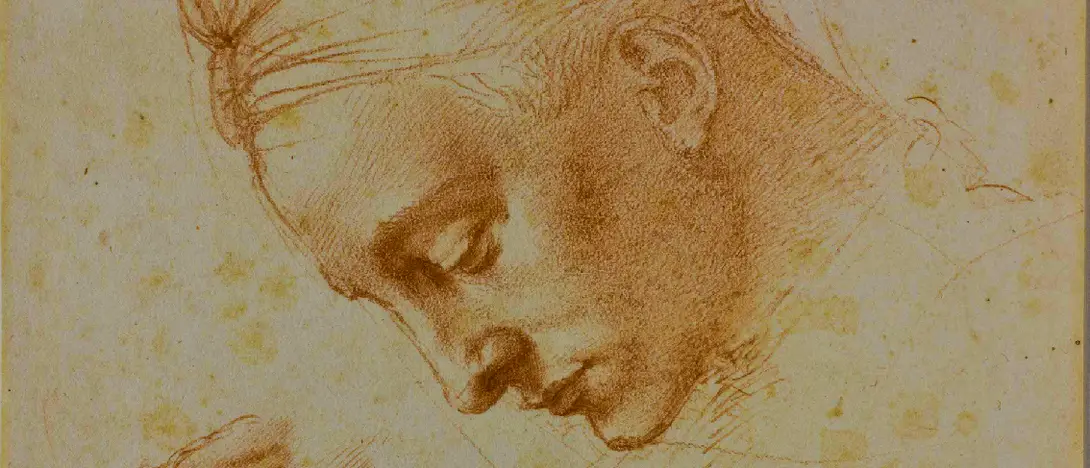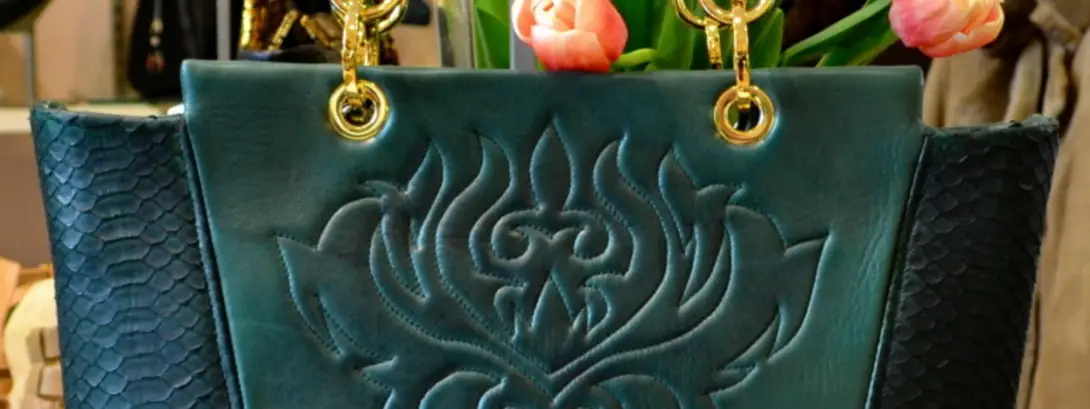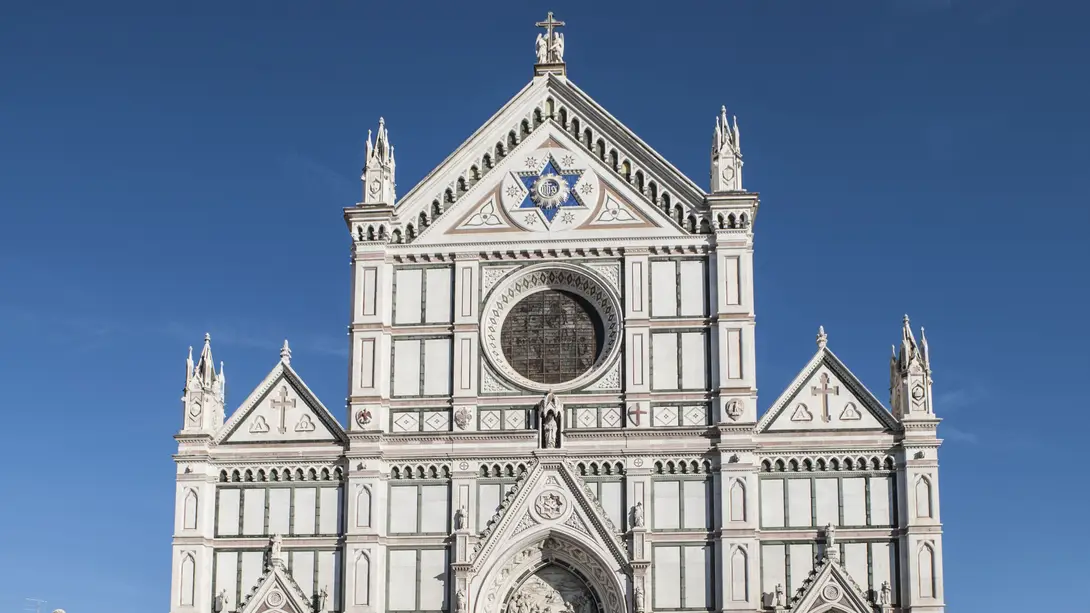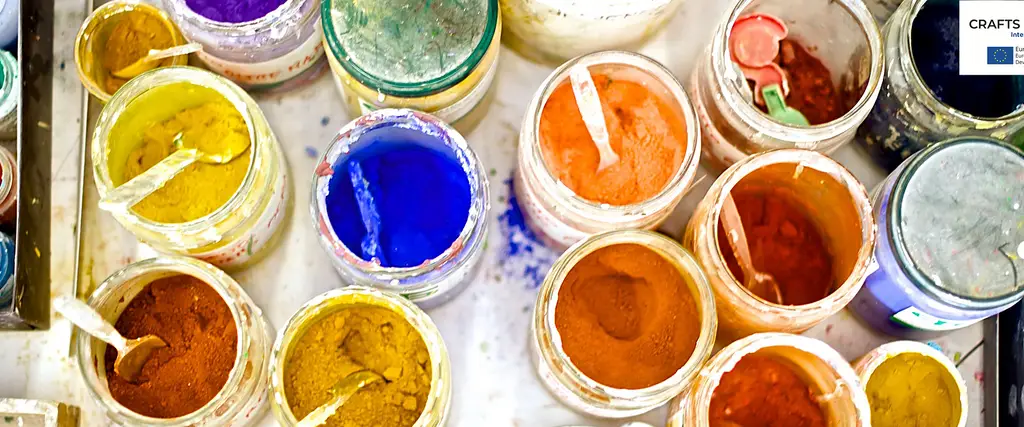
The Colourful Florence
A riot of scents and colors characterizes these stores located on the east side of downtown Florence, between tradition and pop settings, theaters and markets. The junction point is the historic Sant'Ambrogio Market where to this day one can see the tingling of students, tourists, residents, merchants and greengrocers who come and go between the market and the neighboring streets, coloring the picture of the area with their heterogeneity.
This imagination is also conveyed by the stores offered here, which are varied and multifaceted, ranging from artisan perfumery to tailoring, from terracotta to scagliola, in a triumph of variety that will leave no one disappointed. While on the historical-artistic side, the places you encounter are of great interest: from the Murate, restored and returned to the city, to the Oblate Library, to the Santa Croce complex.
This itinerary is part of the European Project Crafts Code
Artex
Les lieux
Étapes
Gerini decoro e arredi
Gerini Decoro e Arredi's workshop and exhibition space is located in the historic centre, near the cathedral, inside Palazzo Galletti. In this charming and evocative environment, furniture is made and decorated. Furniture, paintings and furnishing accessories bear the centuries-old mark of Florentine craftsmanship. Traditional processes involving the construction, restoration and decoration of wood are combined with design solutions and contemporary trends.
Sbigoli Terrecotte
Sbigoli Terrecotte is an ancient workshop, founded in 1857 and specialisedin the production of table and decorative ceramics. Taken over by the Chini Adami family, the workshop/studio is run by Lorenza Adami, Master Craftsman, and her sister Chiara. Just a stone's throw from the cathedral, it offers the possibility of 'touching with one's own hand' Lorenza's creativity and artistic and professional skills, as the workshop is always active and full of objects in the various stages of production.
Biblioteca delle Oblate
Founded in 1288, the secular charitable order of the Oblates was committed to assisting the ill and infirm. The vast religious and hospital complex, which has simple 15th-century architecture and has handed down the name of the Oblates, now houses the Biblioteca delle Oblate, which has been expanded with the exceptional collection of the historic Biblioteca Comunale Centrale.
One of the most attractive parts of the complex is the elegant cloister, the only one in Florence with three floors, which is topped by a terrace with panoramic views.
On the ground floor of the library, there is the Children and Young Section which occupies a space of about 300 square meters, reserved for all readers from 0 to 14 years.
Teatro della Pergola
The Pergola Theatre in Florence was inaugurated 350 years ago to meet the needs of the growing local theatre community.
Ferdinando Tacca was commissioned to design the new theatre, clearly inspired by Renaissance Architecture models:the theatre had a single hall and balconies for single families, which allowed for a more intimate and privileged view of the show. Therefore, the Pergola Theatre became theprototype of the Italian-style theatre.
Its plan is horseshoe-shaped, its stage is very deep and its auditorium wide. Open to the paying public since 1718, the theatre was expanded and, in 1801, the Saloncino (small hall) was added for music and dance.
Many great authors chose this theatre for their operas, including Antonio Vivaldi, Giuseppe Verdi, Eleonora Duse, Eduardo De Filippo.
Jewish Museum and Synagogue
The Synagogue
Inaugurated in 1882, the Florence Synagogue is considered one of the most beautiful in Italy and is characterised by its large copper-green dome, part of the Florentine skyline.
It was built following the ‘redevelopment’ of the area corresponding to today's Piazza della Repubblica (at the time of Florence's capital, 1865-71), where the ghettowith two synagogues used to be. The new project, to be built in the area of Piazza d'Azeglio, was commissioned to Marco Treves by David Levi.
It is a Moorish-style complex with a central plan, elegantly clad in travertine and pink pomato, with a large central dome, clad in copper, and side towers with small domes on the façade. The impressive interior of the synagogue, illuminated by polychrome stained-glass windows, is entirely covered with decorative arabesque motifs, originally illuminated in gold, and rich mosaics; the upper part opens onto the women's galleries. Fortunately, at the time of the Nazi occupation, the temple was not seriously damaged.
The Jewish museum
The first sections of the museum focus on the history of the Jews in Florence down the centuries and their relationship with the city. Then there are various objects and furnishings used for worship in the home, the most significant ones for illustrating important feasts and moments in life. The last room contains exhibits of photographic and archive documents that shed light on the life of the Florentine Jews. Inside the oriental garden, where the complex stands, there is a plaque with the names of 248 Jewish residents of Florence killed by the Nazis.
The admission ticket also includes entry to the Synagogue on the ground floor.
Loggia del pesce & Piazza de' Ciompi
The Loggia del Pesce (fish loggia) which is located today in Piazza dei Ciompi, is a project by Giorgio Vasari commissioned by Grand Duke Cosimo I de' Medici in 1567.
The loggia was intended to house the fish sellers who, with the construction of the Vasari Corridor, had lost their position on the banks of the Arno and were moved to where via Pellicceria is now located. Whe Florence became Capital of Italy (1865-1871) this position also became an obstacle during the rehabilitation works of the ghetto and the construction of the current Piazza della Repubblica. The loggia was then dismantled and only in 1956 rebuilt again in Piazza dei Ciompi, without its original function but with the original materials, in particular in the spandrels of the arches there are tondos depicting different species of fishes. At number 11 a plaque commemorates the home of Lorenzo Ghiberti, author of the famous Door of Paradise of the Florentine Baptistery.
Recently Piazza dei Ciompi (which takes its name from the "minor workers" of the wool art, protagonists of the famous riot of 1378), after the transfer of the Flea Market to Piazza Annigoni, has been the subject of an important redevelopment and often hosts events of various kinds.
Sant'Ambrogio Market
The covered market of Sant'Ambrogio hosts food shops and like the San Lorenzo market dates back to the end of 19th century when a complete new design of the historic centre has been put on.
In 1860 Florence became the new capital of the Kingdom of Italy and took on its present appearance, clearly inspired by the great European capitals, Paris first.
The construction of new markets was the main project of the new concept of the city. The market of Sant' Ambrogio, built in the large vegetable garden in the block beyond Santa Croce towards the walls, with a cast iron structure, was inaugurated in 1873 about a year before than San Lorenzo market.
The covered market is the very beating heart of the neighbourhood; outside the building all around the market more stalls can be found with different items such as flowers, clothes, household objects.
MAD Murate Art District
In one of the spaces of the Murate, a former prison in Florence brought to life by an urban redevelopment plan, based on a project by architect Renzo Piano, is MAD.
Mad (Murate Art District) offers exhibitions, meetings, performances and workshops centred on contemporary themes and artistic languages, with a strongly interdisciplinary slant.
There is a Magazine Space and an Artists' Residence: both offer a place for updating and training.
Guided tours and workshops for adults and families are also offered to discover the Murate complex, the history of a former convent that became a prison in the 1930s and was finally turned into a city space dedicated to contemporary arts.
The tough prison or carcere duro, the most severe detention area of the Murate prison, permanently hosts the sound installation Nuclei (Vitali) by artist Valeria Muledda.
Ang un bebè
Ang un bebè was born 10 years ago in Rome, with the intention of creating sartorial clothes for children, with a simple and refined taste and a careful eye for materials, always of high quality and exclusively natural.
A few years ago, Agnese Fazolo moved to Florence, where she recreated the network of qualified artisans for production. Ang un bebè produces two lines of clothing, one destined for distribution, and another more tailored and tailor-made.
Cecilia Falciai decorazioni artistiche scagliola
A new Florentine artisan workshopspecialising in scagliola and Florentine commesso mosaic work. All works are unique pieces that Cecilia Falciai creates personally. While starting from tradition, she also approaches modern influences, experimenting both on the subjects and on the combination of techniques, thus obtaining very personal works. The workshop is an open space for anyone who wants to see first-hand what this craft consists of.
Arômantique
Arômantique is a small workshop in the heart of Florence. Like all magical places, it is hidden and must be sought out; you enter through a doorway like so many others and, after a corridor like so many others, you return to the open air, to a surprising aromatic garden: a perfumed journey that takes us back to childhood, to the re-discovery of the things that make us feel good. Harmony and happiness are within us, they just need to be reawakened.
Discovering natural perfumes is an immense gift. Listening to an essence is pure magic, which rips away all our burdens of knowledge to bring us back pure, as if we were just born, in front of a universal work of art, without codes.
Fondazione Casa Buonarroti
The Museo di Casa Buonarroti is to all intents and purposes the temple of Michelangelo's memory.
Acquired by Michelangelo Buonarroti himself around 1510, the property only became central to the Buonarroti family in the 17th century, when the palace took on its current appearance. It was in fact thanks to his great-grandson Michelangelo the Younger, a prominent figure in 17th-century Florentine culture, that this house was decorated with paintings celebrating the family glory, to which four rooms were dedicated.
The core of the collection are Michelangelo's autograph works: exraordinary early sculptures such as the Madonna of the Staircase, the Battle of the Centaurs; the display includes Etruscan and Roman sculptures, Renaissance and 17th-century paintings, Della Robbia glazed terracotta. The great Master is also responsible for the large wooden model for the façade of San Lorenzo Church and the River God, a sketch for the New Sacristy (Medici Chapel Complex).
Thanks to the curatorship of the Fondazione Casa Buonarroti, the museum has an intense exhibition activity, and groups of Michelangelo's drawings are also temporarily exhibited in rotation.
Atelier Classe
For more than 20 years, Atelier Classe has been engaged in the on-site production and retail of top-quality men's and women's clothing made from the finest leathers and trimmings. Specialised above all in luxury leather goods, the various articles include jackets, coats, skirts, trousers and accessories in lambskin, deer, ostrich, crocodile, python, sheepskin and reindeer. We ship worldwide with an extensive repair and replacement guarantee.
Basilica di Santa Croce
Designed by Arnolfo di Cambio (1296), it is the largest Franciscan church in the world; it is also known as the "Pantheon of Italian glories" for its illustrious tombs (Michelangelo, Galileo, Machiavelli, Rossini, Foscolo, Alfieri) that it preserves in the suggestive Gothic interior.
Among the more than 200 tombs, the two Renaissance monuments stand out, masterpieces of Rossellino and Desiderio da Settignano.
Of the numerous chapels in the transept, frescoed in the fourteenth century, authentic masterpieces are the Bardi and Peruzzi chapels, frescoed by Giotto; remarkable are also the works of Donatello (the Annunciation and the Crucifix). The famous Crucifix of Cimabue damaged by the 1966 flood, instead, is displayed in the sacristy. The museum itinerary includes the Cappella dei Pazzi, by Brunelleschi, the two cloisters and the Last Supper, frescoed by Taddeo Gaddi, a treasure chest of numerous works of art (Donatello, Orcagna, Domenico Veneziano).
